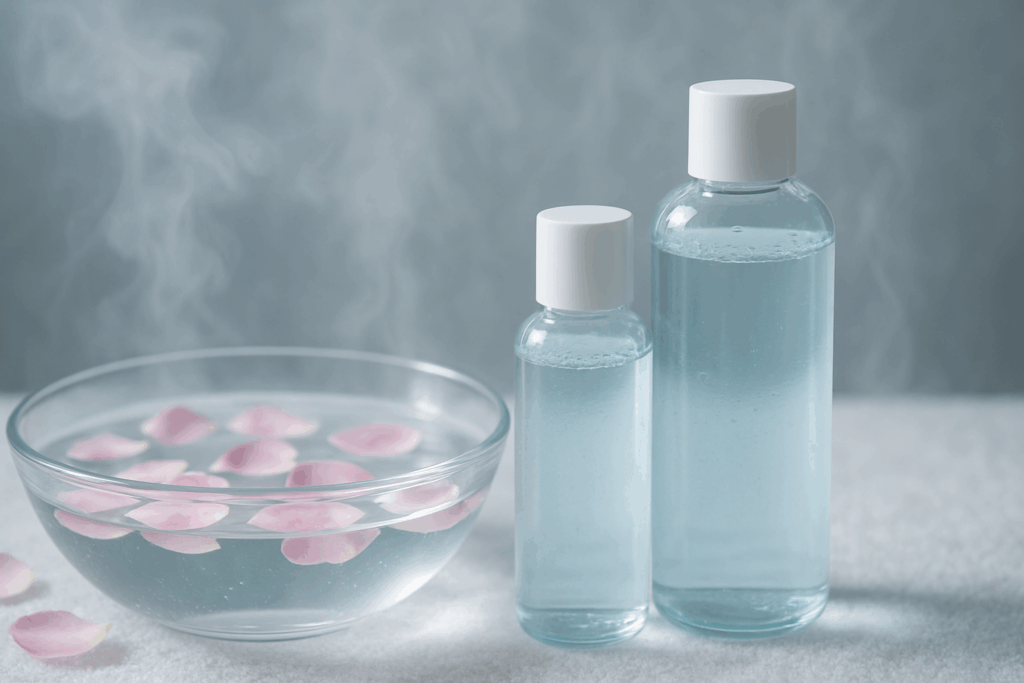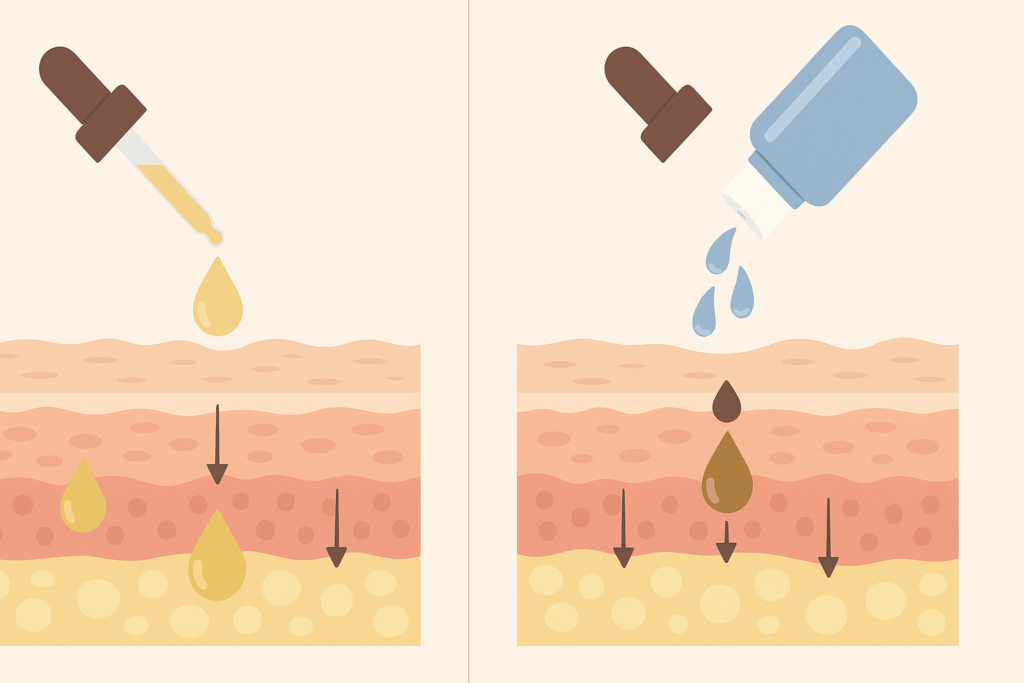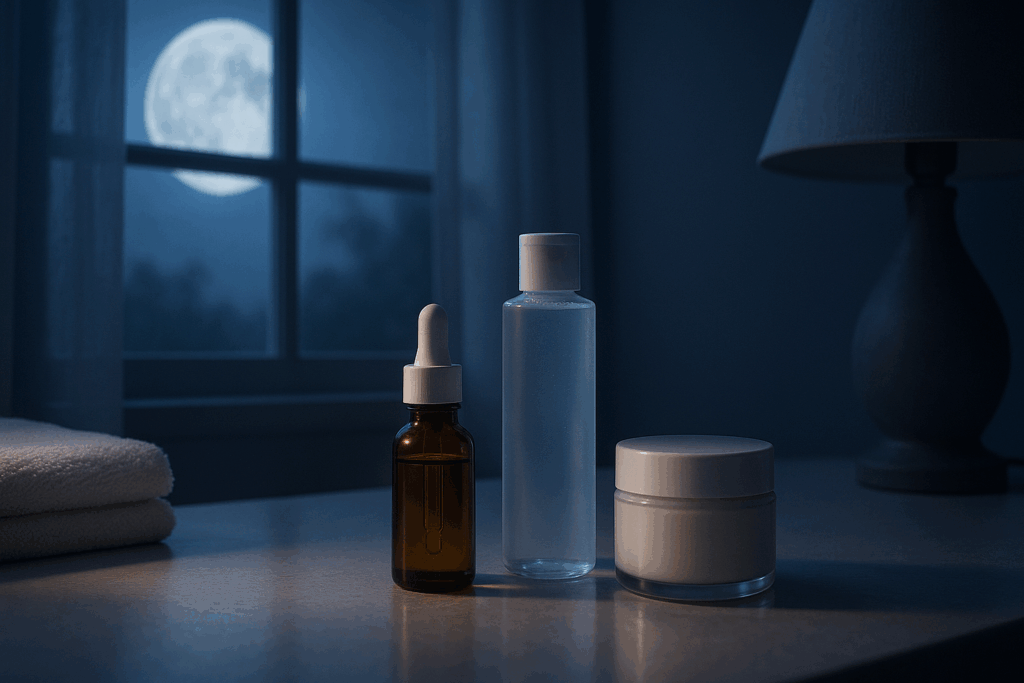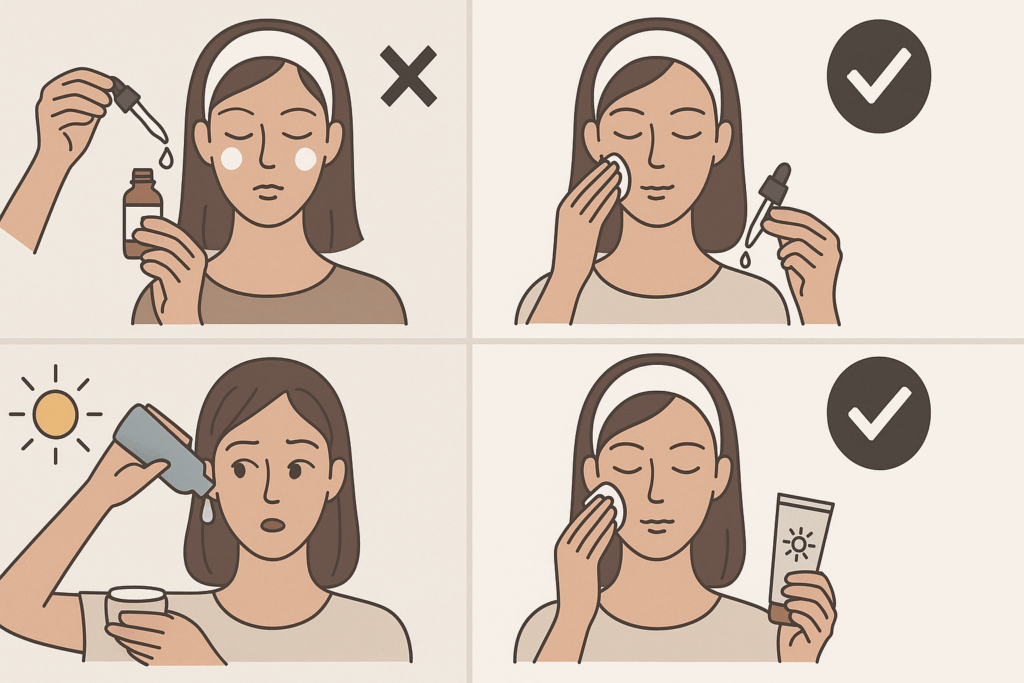Retinol has become a cornerstone in many skincare routines, praised for its ability to smooth fine lines, reduce hyperpigmentation, and enhance overall skin texture. However, one question often arises among skincare enthusiasts: should you use retinol before or after toner? Dermatologists have weighed in on this debate, offering insights that can transform the way you approach your skincare regimen. Understanding the right order of application is crucial, as it can significantly impact the effectiveness of these products and the health of your skin.
You may also like: The Essential Rituals for a Natural Skincare Routine That Supports Whole-Body Wellness

Understanding Retinol and Its Benefits
To grasp the significance of using retinol before or after toner, it’s essential first to understand what retinol is and how it benefits the skin. Retinol is a derivative of vitamin A, known for its powerful anti-aging and skin-renewing properties. When applied to the skin, it accelerates cell turnover, shedding dead skin cells and revealing fresher, more vibrant skin underneath. Retinol also stimulates collagen production, which helps reduce the appearance of fine lines and wrinkles over time.
Moreover, retinol has been shown to improve uneven skin tone and diminish dark spots, making it a versatile addition to any skincare routine. Its exfoliating properties also prevent clogged pores, reducing breakouts and improving overall skin clarity. However, the potency of retinol means that its application must be carefully managed to avoid irritation and maximize its benefits.

The Role of Toner in Your Skincare Routine
Before diving into whether to apply retinol before or after toner, it’s important to understand what toner does for your skin. Toners are liquid-based products designed to remove any lingering traces of makeup, dirt, or oil after cleansing. They also help to rebalance the skin’s pH levels, which can be disrupted during cleansing. Modern toners often contain hydrating ingredients like hyaluronic acid or calming agents like chamomile and aloe vera, making them far more nourishing than the alcohol-heavy formulas of the past.
Toners prepare the skin for subsequent skincare products by ensuring that it is clean, balanced, and receptive. This step enhances the absorption of serums and moisturizers applied afterward, amplifying their effectiveness. Given this role, understanding when to use retinol in relation to toner can help you maximize the results of both products.

Should You Use Retinol Before or After Toner?
The question of whether to use retinol before or after toner is a common one, and dermatologists often recommend applying retinol after toner for optimal results. The reason lies in the purpose of each product. Toners are designed to clear away impurities and prep the skin, creating a clean slate for the active ingredients in serums and treatments like retinol. Applying retinol after toner ensures that it penetrates more deeply into the skin, enhancing its effectiveness.
Moreover, using toner first can also help to balance the skin’s pH levels, which may be temporarily disrupted after cleansing. When the skin is balanced, it is better able to absorb potent ingredients like retinol without as much risk of irritation. Dermatologists also suggest waiting a minute or two after applying toner before layering retinol to allow the skin to fully absorb the toner’s benefits.
That said, some people with particularly sensitive skin may benefit from a slightly altered approach. For them, applying a lightweight moisturizer after toner and before retinol can create a buffer, reducing potential irritation. This method, known as buffering, is especially useful for beginners or those with reactive skin types.

Retinol Night Routine: Maximizing Results
A well-structured retinol night routine can make a significant difference in your skin’s appearance over time. The typical order of application should begin with a gentle cleanser to remove impurities and prepare the skin. Following this, a hydrating toner can be applied to balance and prime the skin for better absorption.
After toning, retinol is applied to the face in a thin, even layer, avoiding the eye area to prevent sensitivity. Some dermatologists recommend waiting about five minutes after applying toner before adding retinol to ensure maximum absorption. If dryness or irritation is a concern, a layer of moisturizer can be applied afterward to lock in hydration and protect the skin barrier.
Regular use of sunscreen during the day is crucial when incorporating retinol into your nightly routine, as retinol can increase the skin’s sensitivity to sunlight. Failing to protect your skin can negate many of the benefits that retinol provides, making sun protection an essential step in any retinol-based skincare regimen.
Building the Perfect Retinol Skin Care Routine
Creating an effective retinol skin care routine is more than just understanding product order. It requires knowledge of complementary ingredients and techniques that enhance the benefits of retinol. For instance, pairing retinol with hydrating ingredients like hyaluronic acid can prevent the dryness sometimes associated with its use. Including a gentle cleanser and a nourishing moisturizer further supports the skin’s barrier.
Additionally, integrating antioxidants like vitamin C in your morning routine can boost your skin’s defense against environmental damage while retinol works its magic overnight. This two-step antioxidant and retinol approach is highly recommended by dermatologists for those looking to achieve luminous, youthful skin. Understanding how each step fits into your overall regimen is key to maximizing the effectiveness of your skincare products.

Common Mistakes to Avoid When Using Retinol and Toner
Even with the best intentions, some common mistakes can hinder the effectiveness of your retinol routine. One of the biggest mistakes is applying too much retinol, thinking that more product will yield quicker results. In reality, a pea-sized amount is typically sufficient for the entire face. Overuse can lead to irritation, dryness, and peeling, which can damage the skin barrier.
Another common mistake is not waiting long enough between applying toner and retinol. Rushing this step can dilute the effects of both products, minimizing their benefits. Dermatologists advise waiting at least a few minutes after applying toner to allow it to fully absorb before adding retinol to your skin. This patience allows the toner to prep the skin without interference, ensuring maximum penetration of retinol.
Additionally, skipping moisturizer is a frequent misstep. Applying retinol without following up with a hydrating layer can lead to dryness and flaking, especially in colder climates or dry environments. Moisturizer helps seal in hydration and maintain the skin’s barrier, making it a non-negotiable step in your retinol routine.
Frequently Asked Questions (FAQ) – The Essential Guide to Using Retinol Before or After Toner
1. Should I Use Retinol Before or After Toner?
The common recommendation from dermatologists is to apply retinol after toner for optimal absorption. Toners help to rebalance the skin’s pH and remove any residual impurities, which prepares the skin to fully benefit from retinol’s active ingredients. Applying retinol before toner can sometimes dilute its potency, reducing its effectiveness. If you have sensitive skin, consider using a hydrating toner with calming ingredients to minimize potential irritation when retinol is applied afterward. For those just starting with retinol, a buffer method that includes a light moisturizer between toner and retinol can help ease your skin into the routine.
2. Can I Use Retinol and Toner Every Night?
While it is possible to use both retinol and toner every night, it largely depends on your skin’s tolerance. Beginners are encouraged to start with retinol just two to three times per week to allow the skin to acclimate. Overuse can lead to dryness, flaking, and irritation, especially if the toner used contains exfoliating ingredients like salicylic or glycolic acid. If your skin becomes overly dry, consider alternating your retinol routine with a hydrating serum or switching to a milder formula. Gradually increasing the frequency over time can help your skin build tolerance while still reaping the benefits of both products.
3. What Type of Toner Should I Use with Retinol?
Choosing the right toner to pair with retinol is crucial for maintaining skin health. Hydrating toners that contain ingredients like hyaluronic acid, rose water, or chamomile are ideal, as they replenish moisture and soothe the skin. Avoid using toners with high concentrations of alcohol or harsh astringents, as these can strip the skin and increase the likelihood of irritation. If you prefer an exfoliating toner, opt for one with gentle acids like lactic acid, but avoid combining it with retinol on the same night. Alternating exfoliating toners and retinol on different nights can help prevent over-exfoliation and skin sensitivity.
4. Can I Layer Other Products with Retinol and Toner?
Yes, you can layer other products with retinol and toner, but the order and choice of products matter. After cleansing, apply your toner, followed by any hydrating serums or essence to add moisture. Retinol should come next, and it should be sealed in with a moisturizer to prevent dehydration. If you want to incorporate an antioxidant serum like vitamin C, it is best used during your morning routine, as it protects against environmental damage. Always remember to finish with sunscreen during the day, as retinol increases sun sensitivity.
5. How Long Should I Wait Between Applying Toner and Retinol?
Dermatologists typically recommend waiting about one to two minutes after applying toner before using retinol. This brief waiting period allows the toner to fully absorb into the skin, ensuring that its hydrating and pH-balancing properties are not disrupted by the retinol. Rushing this step may dilute the effectiveness of both products, reducing the overall impact on your skin. If you are in a hurry, gently pat your face with clean hands to speed up absorption. For those with sensitive skin, waiting a bit longer—around five minutes—can further reduce the risk of irritation.
6. What Is the Ideal Skincare Routine Order with Retinol?
The ideal skincare routine order with retinol is as follows: cleanse your face with a gentle, non-stripping cleanser, apply a hydrating toner, and wait for it to absorb. Next, apply a serum if you are using one, followed by retinol. Allow the retinol to sit for a few minutes before finishing with a moisturizer. In the morning, always apply sunscreen as the last step to protect your skin from UV damage. Consistency and correct layering are key to achieving the best results from your retinol routine.
7. Can I Use Retinol in the Morning Instead of at Night?
Although retinol can be used in the morning, it is not typically recommended due to its photosensitivity. Sunlight can degrade retinol, reducing its efficacy and potentially causing skin irritation. Dermatologists generally advise using retinol as part of your night routine, where it can work synergistically with your skin’s natural repair processes. If you do choose to use it during the day, ensure you apply a broad-spectrum sunscreen with at least SPF 30 to protect your skin. For enhanced protection, consider pairing it with antioxidants like vitamin C in your morning routine.
8. What Happens If I Skip Toner When Using Retinol?
Skipping toner when using retinol does not necessarily harm your skin, but it may reduce the effectiveness of your overall routine. Toner helps to balance your skin’s pH and remove leftover impurities, creating a more receptive surface for retinol. Without this step, the retinol may not penetrate as effectively, potentially limiting its anti-aging and skin-renewing benefits. However, if you are using a highly hydrating cleanser, the impact of skipping toner may be less noticeable. For optimal results, it is best to include a gentle, alcohol-free toner before applying retinol.
9. How Can I Prevent Flaking and Peeling with Retinol?
Flaking and peeling are common side effects of retinol, especially when starting out. To prevent this, begin with a lower concentration of retinol and gradually increase its use as your skin builds tolerance. Incorporating a hydrating toner and a rich moisturizer into your routine can help lock in moisture and support the skin barrier. You may also consider the buffering method, where you layer a light moisturizer before and after applying retinol. Finally, avoid combining retinol with other exfoliating products, as this can exacerbate irritation.
10. How Do I Know If My Retinol Routine Is Working?
Signs that your retinol routine is working include smoother skin texture, reduced fine lines, and a more even skin tone over time. Initially, you might experience slight dryness or flaking as your skin adjusts, which is a normal response. Consistent use, paired with proper hydration and sun protection, will gradually reveal healthier, more resilient skin. If you notice persistent redness, excessive peeling, or irritation, it may indicate that the product is too strong or being used too frequently. Adjusting your application frequency or switching to a milder formula can help maintain progress without compromising skin health.
Conclusion: Perfecting Your Retinol and Toner Routine
Mastering the balance of retinol and toner in your skincare regimen can lead to transformative results. Understanding when to use retinol before or after toner is just one aspect of maximizing its benefits. Incorporating the right hydrating ingredients, avoiding common mistakes, and following a well-structured routine ensures that your skin reaps the full benefits of this potent ingredient. Dermatologists emphasize the importance of patience, consistency, and sun protection to prevent potential irritation and maintain healthy, radiant skin. When used correctly, retinol can become a cornerstone of your anti-aging routine, delivering smoother, more even-toned, and youthful-looking skin for years to come.
Further Reading:
Toner Before or After Retinol? Yes, the Order Matters
Your Comprehensive Guide to Using RetinoidsYour Comprehensive Guide to Using Retinoids